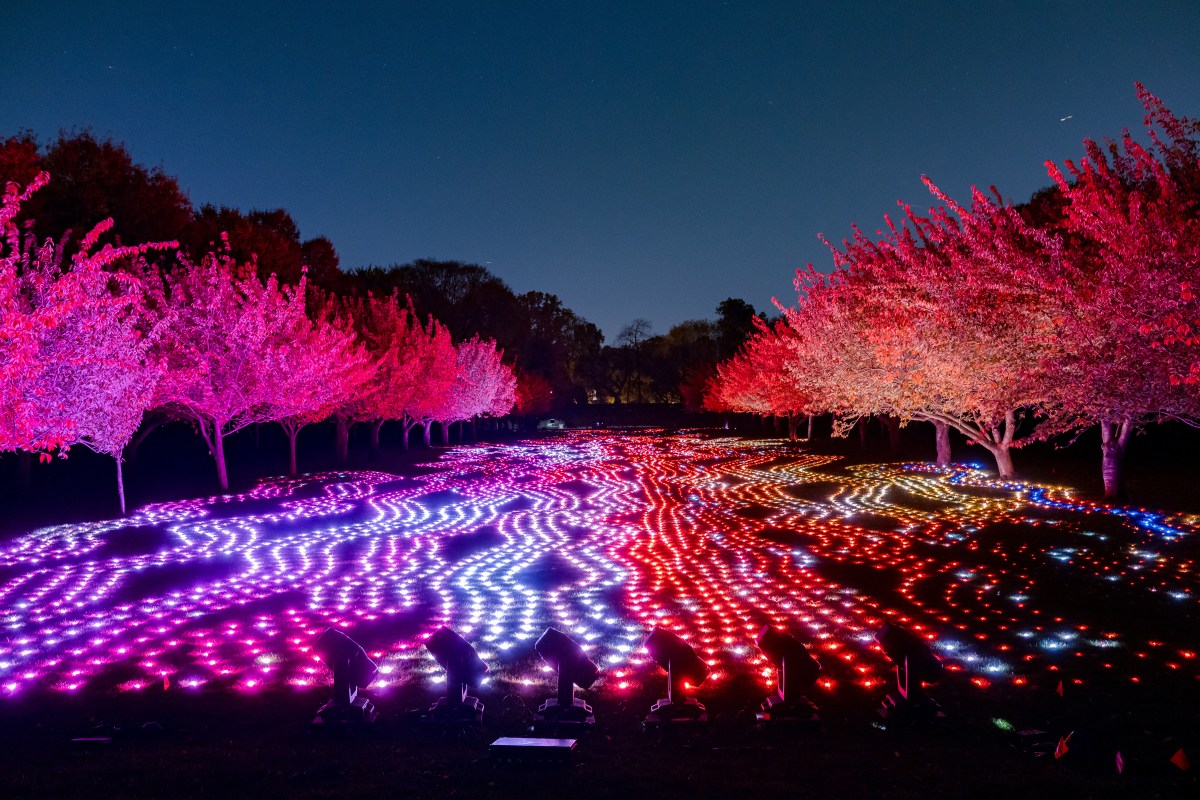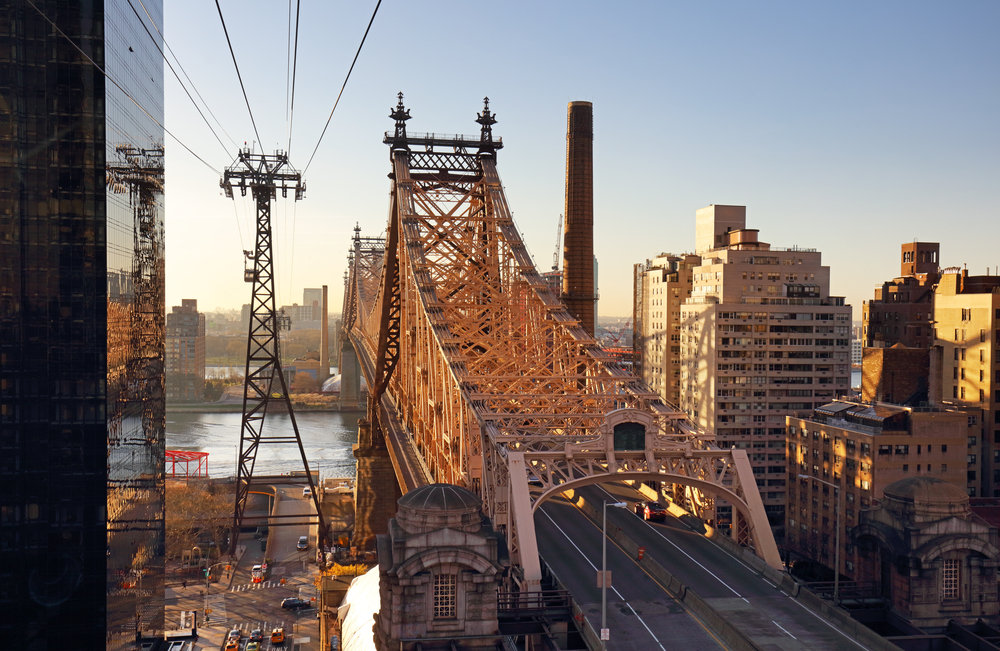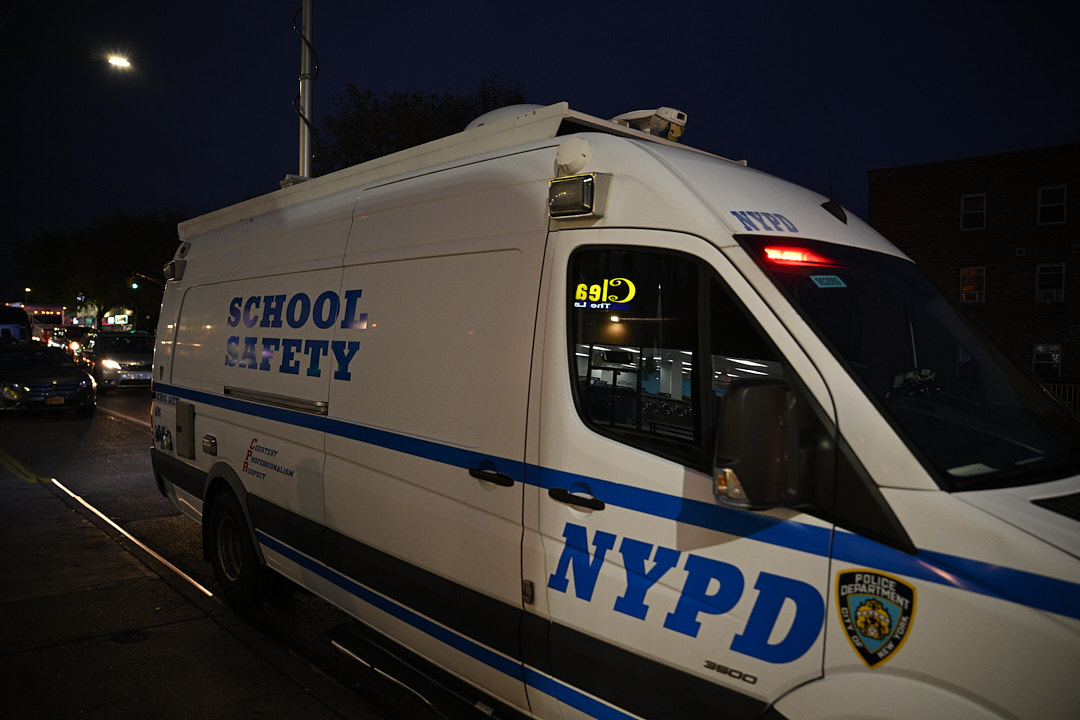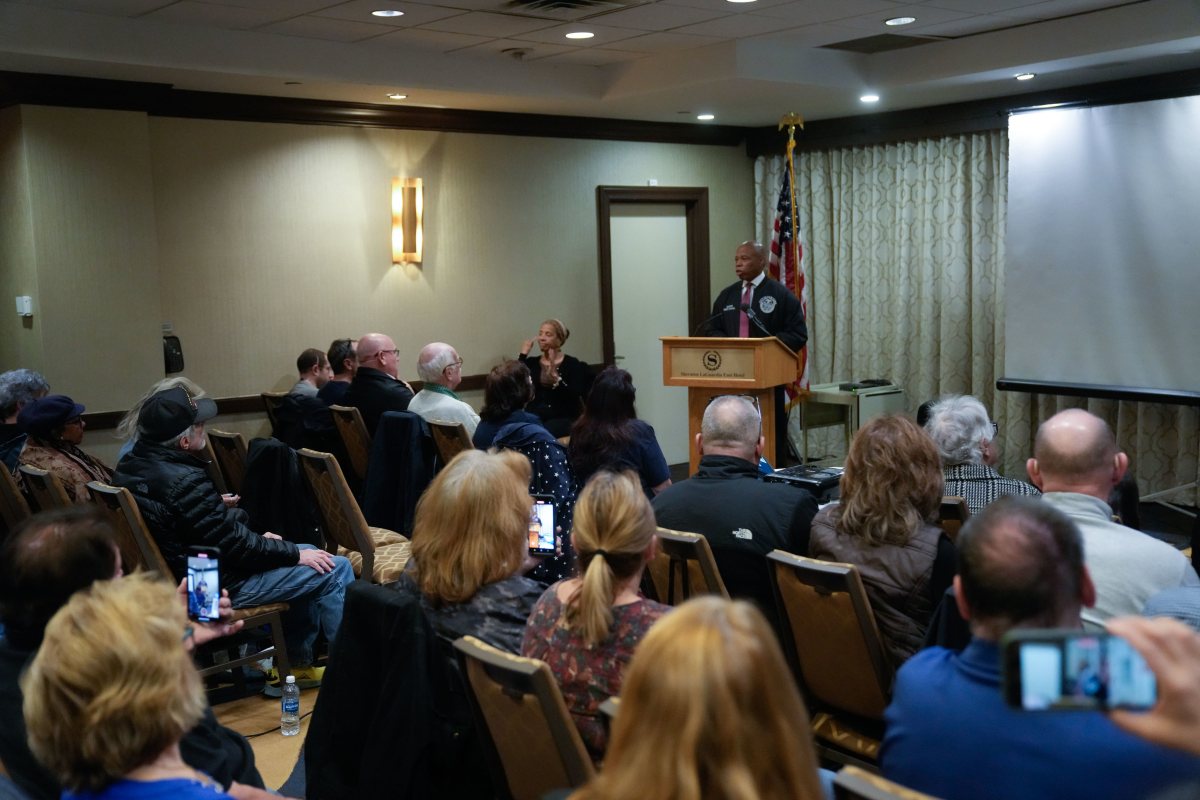
He earned the moniker “King of Graffiti” by sneaking into train yards in the Bronx and transforming drab subway cars into colorful canvasses over 40 years ago.
Since that time, the artist known as BLADE has maintained a vital career with his work being shown around the world. Still, he shook his head in amazement on Wednesday, while standing in a shiny tower near the revitalized Brooklyn waterfront for a preview of a new exhibit “Beyond the Streets: Vandalism As Contemporary Art.”
“It’s mind boggling,” said BLADE, whose real name is Steven Ogburn. “This was an art form created by young people for young people and now you see it in museums everywhere.”
“Beyond the Streets” opens on Friday, featuring paintings, drawings, sculpture, photos and installations from more than 150 artists. And while some of the highlights are works from the 1970s and 1980s, curator Roger Gastman is quick to point out this is more than a nostalgia trip.

“This is not a show about the history of New York graffiti,” said Gastman, an urban anthropologist, historian and collector. “It’s a show based on artists who came out of the graffiti and street art movement, who went on to have studio practices, etc.”
Along with BLADE, there are many familiar names from the New York scene such as Lady Pink, TATS CRU and Lee Quinones. There’s also a painted jacket and drawings from Keith Haring and Jean-Michel Basquiat, whose early work appeared in subway stations and on building walls throughout the city before they became darlings of the gallery set.
The exhibit also includes the U.S. debut of Shepard Fairey’s 30th anniversary project “Facing the Giant: 3 Decades of Dissent.” Fairey, a graphic designer and street artist, is probably best known for creating the iconic Barack Obama “Hope” poster used during the 2008 campaign. But New Yorkers will also recognize his “OBEY” stickers that feature the image of professional wrestler “Andre the Giant,” once plastered all over the city.
The exhibit fills more than 100,000 square-feet of space, two floors at 25 Kent, a new building in Williamsburg with floor-to-ceiling windows and views of the East River.
Gastman admits there were some artists and pieces he had to reluctantly leave out.

“We want to treat each artist in their own unique space,” he said. “I don’t want to put 12 different paintings on a single wall.”
The show opened in Los Angeles last year and Gastman said he’s thrilled it’s in the city credited with helping create the street art/graffiti movement.
“I’m honored to be in the show with some of the godfathers, the progenitors,” said Victor Reyes, a San Francisco-based artist who started as a graffiti writer in the 1990s and has three works on display.
Actress Rosie Perez, who grew up in Brooklyn, attended the opening and praised the exhibit for mixing contemporary street art and graffiti with classics.
She recalled New York City in the late 1970s and ’80s as “wonderful and enchanting and exciting and depressing and uplifting.”

Her husband, the influential graffiti and graphic artist Eric Haze, is part of “Beyond the Streets.”
“What I really love about this show is that it not only celebrates the original building writers, but it’s also bringing it into the 21st century,” Perez said. “There’s a lot of modern art here.”
Perez admired the view from the gallery’s windows but said watching the gentrification of Williamsburg and Greenpoint — where she was born — is “bittersweet.”
“On one hand, it’s wonderful that commerce has come to Brooklyn,” she said. “One the other hand, a lot of mom-and-pop shops have been left out.”
Another highlight is a mini-gallery dedicated to the Beastie Boys, filled with ephemera and photos. The native New Yorkers unapologetically blended hip-hop with funk, rap and a street sensibility.

There’s a battered Def Jam jacket, a T-shirt from Stuyvesant High School, a pair of Adidas sneakers and even a 1988 letter from a hotel manager to member Adam Yauch, saying he had received complaints that items falling from his room were hitting people on the sidewalk.
Adidas is also one of the main funders of the exhibit.
“Historically, Adidas has been the unofficial mark of this movement,” said Cullen Poythress, senior communications manager at Adidas Skateboarding. “There’s no better city to showcase and tell this story.”
Some of the most iconic photos of young graffiti artists honing their craft in the 1970s and 1980s were captured by Martha Cooper. She took an interest after seeing young kids practicing their “tags,” or personalized signatures, while on assignments as a New York Post photographer.
“I feel really lucky that I decided to document something that is still of interest to people,” Cooper said, while standing in front of several photos.
Her favorite shows Dondi, the graffiti legend who first allowed Cooper to photograph him in the train yards.
“I think it captures the intensity of painting on the train,” she said.
If you go: The exhibit is open Wednesdays through Sundays, from 11 a.m. to 8 p.m. Admission is $25. For children between the ages of 6 and 11, admission is $12. Children 5 years and under are admitted for free.
Twenty Five Kent is located at North 12th between Wythe and Kent avenues.






























